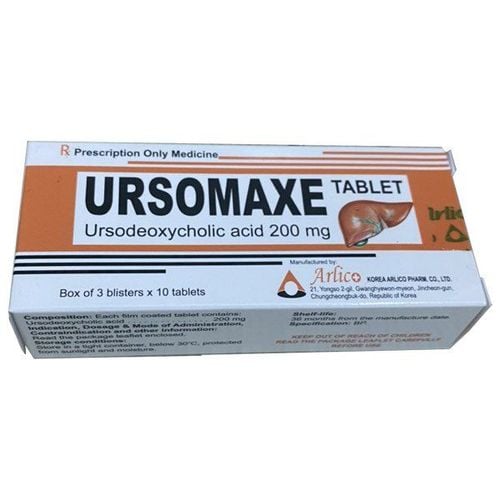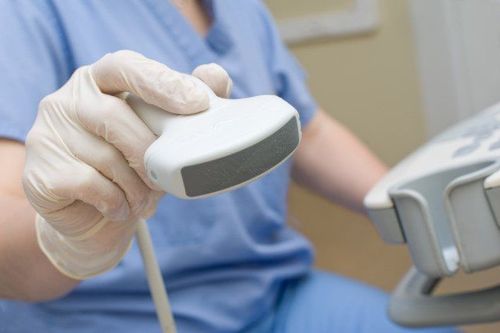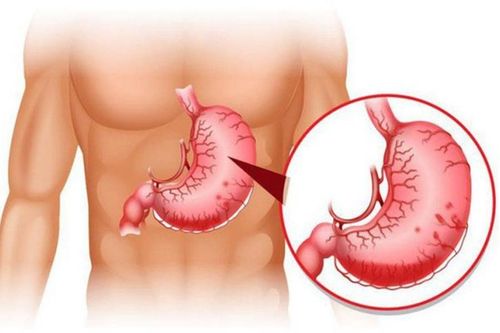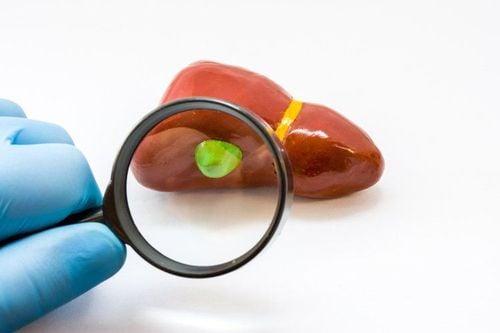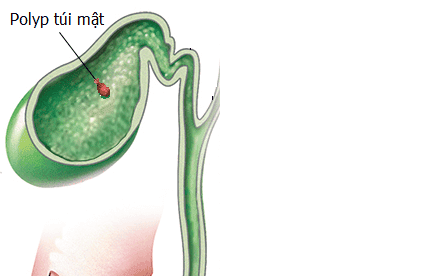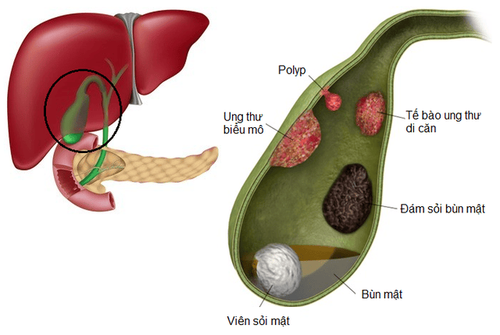This is an automatically translated article.
The article was professionally consulted by MSc Vu Van Quan - Department of General Surgery & Anesthesia - Vinmec Hai Phong International General Hospital.
Laparoscopic cholecystectomy is surgery to remove the gallbladder, a pear-shaped organ located below the liver. Normally, laparoscopic cholecystectomy is not dangerous, but after surgery still need to pay attention to some points for the patient's health to recover the fastest.
1. Follow-up after laparoscopic cholecystectomy
The first two hours after laparoscopic cholecystectomy, you will be closely monitored for abnormalities such as pain, or other vital signs. 6 to 8 hours after the end of surgery, the patient can eat and exercise lightly to help blood circulation, increase biliary tract movement to reduce post-procedural pain and inflammation, and reduce abdominal bloating. To avoid fluid accumulation in the lungs, during the days in the hospital you need to practice deep breathing, slow breathing and breathing with abdominal muscles. The first day after surgery, the patient is monitored for signs of complications such as infection, bleeding, and bile leakage. At this time, it is necessary to pay attention to the symptoms of swelling, heat, redness, pain, vomiting, fever... to promptly notify the treating doctor. After surgery, you can go home after 2 to 3 days in the hospital and can begin to recover. However, during the first week, most people still feel some pain, but this will improve gradually over the next 2-3 weeks. Do not let water get into the incision (especially during the 2 days after surgery). You can still bathe or clean yourself, but you need to keep the incision clean and dry. Do not arbitrarily apply ointment or anything else to the incision until it has healed. When health allows, the patient should get out of bed and walk gently to help the body recover better.
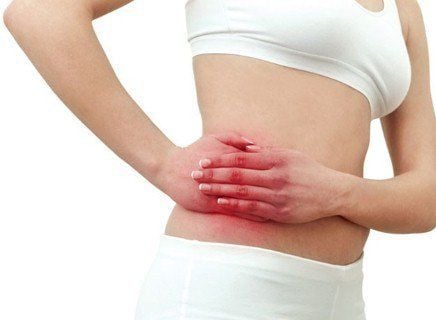
Trong tuần đầu tiên sau mổ nội soi hầu hết mọi người vẫn bị đau
2. How long after laparoscopic cholecystectomy does the body return to normal?
The time it takes to fully recover from surgery depends on the type of cholecystectomy and the patient's overall health. Usually with laparoscopic cholecystectomy, the patient can return to a normal life after just a few days.3. How long does cholecystectomy live?
Laparoscopic cholecystectomy has very few complications, so it is not dangerous and does not have a big impact on life expectancy. In the first time after surgery, the patient will feel a lot of pain in the right lower quadrant, this is normal and will improve gradually over time.
Because the gallbladder has been removed, the liver will secrete bile with meals to help the body digest and absorb fats and vitamins as usual.
Then bile will go directly from the liver to the duodenum to digest the food. Therefore, in the beginning, you may experience symptoms of digestive disorders such as loss of appetite, slow digestion, stomach itching... After a while, the body will adapt to this change and the symptoms disappear. .
4. What should people who have had their gallbladder removed?
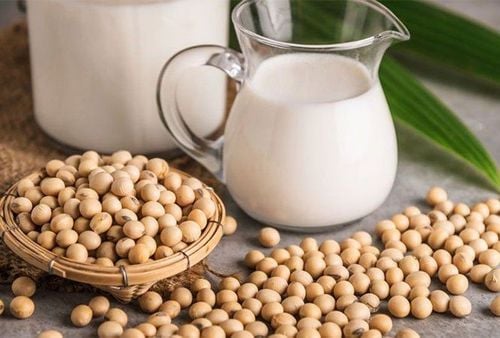
Nên lựa chọn sữa có nguồn gốc thực vật như sữa đậu nành
After cholecystectomy, digestive function may be disturbed and the ability to absorb fat is reduced. Patients are prone to bloating, indigestion when eating greasy foods, easy diarrhea or bile reflux causing gastritis.
On the other hand, the gallbladder is only a part of the bile duct, so cholecystectomy does not mean that there are no gallstones, so prevention of gallstones through scientific nutrition is very important to minimize all all these discomforts.
For a healthy diet after cholecystectomy, first start by choosing foods that are beneficial for digestive health such as low in cholesterol, rich in soluble fiber and do not produce gas.
Fat Avoid fats from animals such as animal fats, animal organs because they contain a lot of cholesterol that both causes indigestion and increases pressure on the hepatobiliary system. Fatty milk or dairy products such as cheese, buttermilk, whole milk, condensed milk... also need to be avoided because they will cause you to have abdominal pain and bloating.
If you drink milk, choose plant-based products like soy milk. Opt for fat alternatives that are good, unsaturated plant-based sources of fats like olive oil, avocado, canola, and sunflower oil.
Protein Protein sources from food are very rich, but for those who have had their gallbladder removed in the first time after surgery, it is necessary to avoid red meats such as beef and pork because they contain a lot of cholesterol.
Instead, choose white meat such as skinless chicken, fish, and vegetable protein such as tofu and soybeans. During the recovery period, the patient needs to eat more protein to compensate for the reduced energy source due to fat restriction.
Fiber Fiber is essential to stimulate normal bowel movements again, and they also help limit the irritation of bile acids to the intestinal lining. However, it is necessary to add slowly, do not eat too much in the first time because it can cause bloating and gas.
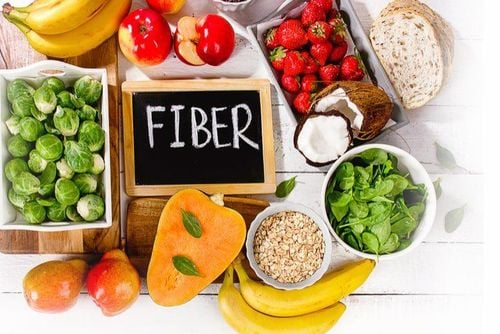
Chất xơ rất cần thiết để kích thích nhu động ruột hoạt động bình thường trở lại
From the next 1 to 2 weeks: At this stage, the digestive function has not fully recovered, so the patient still maintains easy-to-digest foods such as soup, fruit, soft rice, oatmeal, chicken, etc. fish, eat more bananas if you have constipation.
3 weeks after cholecystectomy: You can gradually switch to a solid diet with high fiber foods such as fruits, grains, fish, chicken but still need to limit beef and pork . Good sources of fats from flaxseeds, avocados, fish are also very good because they contain unsaturated fatty acids such as omega 3, omega 6.
Do not use coffee, stimulants or fried foods or spicy spices such as chili peppers. , garlic, salt and pepper as they can cause stomach upset or worsen constipation
Cholecystectomy is the only way to treat symptomatic gallstones. Most people will not have serious digestive problems after surgery. Some people may have frequent loose stools although it will go away with time. You should see your doctor if any changes or symptoms occur with your bowel habits.
5. Advantages of laparoscopic cholecystectomy at Vinmec
Currently, all hospitals under the Vinmec International General Hospital system apply modern laparoscopic cholecystectomy techniques in the treatment of current gallbladder diseases. The advantages of laparoscopic cholecystectomy at Vinmec International Hospital include:
Vinmec owns a system of modern equipment, advanced medical machinery, and maximum support for the surgical process; Modern facilities, aseptic environment ensure patient safety, limit complications; A team of highly qualified medical professionals, well-trained at home and abroad, seasoned with experience, able to improvise and promptly handle unusual problems; Patients are cared for and closely monitored after surgery, rested to recuperate in a standard and fully equipped ward. From October 2019, Vinmec Hai Phong Hospital welcomes specialists in Gastroenterology - Liver, bile, and pancreas from 108 Military Central Hospital to visit periodically for diseases of the stomach, esophagus, colorectal, and liver. , spleen, biliary tract, pancreas, anal fistula, rectal prolapse, gastrointestinal cancer screening... At the request of the patient, Senior Doctor Le Van Thanh - Head of the Department of Hepatobiliary and Pancreatic Surgery - Military Central Hospital 108 will directly operate. Schedule on Saturday, surgery on Sunday so that customers can easily arrange their personal time and have more time to recover after the intervention.
For detailed advice on laparoscopic cholecystectomy techniques at Vinmec, you can go directly to Vinmec medical system nationwide or contact online booking HERE.





